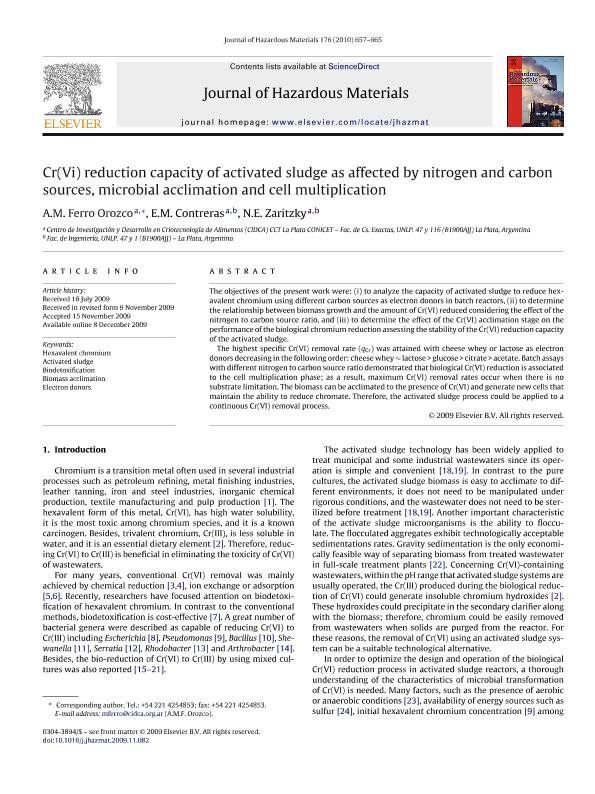Artículo
Cr(Vi) reduction capacity of activated sludge as affected by nitrogen and carbon sources, microbial acclimation and cell multiplication
Fecha de publicación:
19/04/2010
Editorial:
Elsevier Science
Revista:
Journal of Hazardous Materials
ISSN:
0304-3894
Idioma:
Inglés
Tipo de recurso:
Artículo publicado
Clasificación temática:
Resumen
The objectives of the present work were: (i) to analyze the capacity of activated sludge to reduce hexavalent chromium using different carbon sources as electron donors in batch reactors, (ii) to determine the relationship between biomass growth and the amount of Cr(VI) reduced considering the effect of the nitrogen to carbon source ratio, and (iii) to determine the effect of the Cr(VI) acclimation stage on the performance of the biological chromium reduction assessing the stability of the Cr(VI) reduction capacity of the activated sludge. The highest specific Cr(VI) removal rate (qCr) was attained with cheese whey or lactose as electron donors decreasing in the following order: cheese whey ≈ lactose > glucose > citrate > acetate. Batch assays with different nitrogen to carbon source ratio demonstrated that biological Cr(VI) reduction is associated to the cell multiplication phase; as a result, maximum Cr(VI) removal rates occur when there is no substrate limitation. The biomass can be acclimated to the presence of Cr(VI) and generate new cells that maintain the ability to reduce chromate. Therefore, the activated sludge process could be applied to a continuous Cr(VI) removal process.
Archivos asociados
Licencia
Identificadores
Colecciones
Articulos(INTEMA)
Articulos de INST.DE INV.EN CIENCIA Y TECNOL.MATERIALES (I)
Articulos de INST.DE INV.EN CIENCIA Y TECNOL.MATERIALES (I)
Citación
Ferro Orozco, Ana Micaela; Contreras, Edgardo Martin; Zaritzky, Noemi Elisabet; Cr(Vi) reduction capacity of activated sludge as affected by nitrogen and carbon sources, microbial acclimation and cell multiplication; Elsevier Science; Journal of Hazardous Materials; 176; 1-3; 19-4-2010; 657-665
Compartir
Altmétricas




